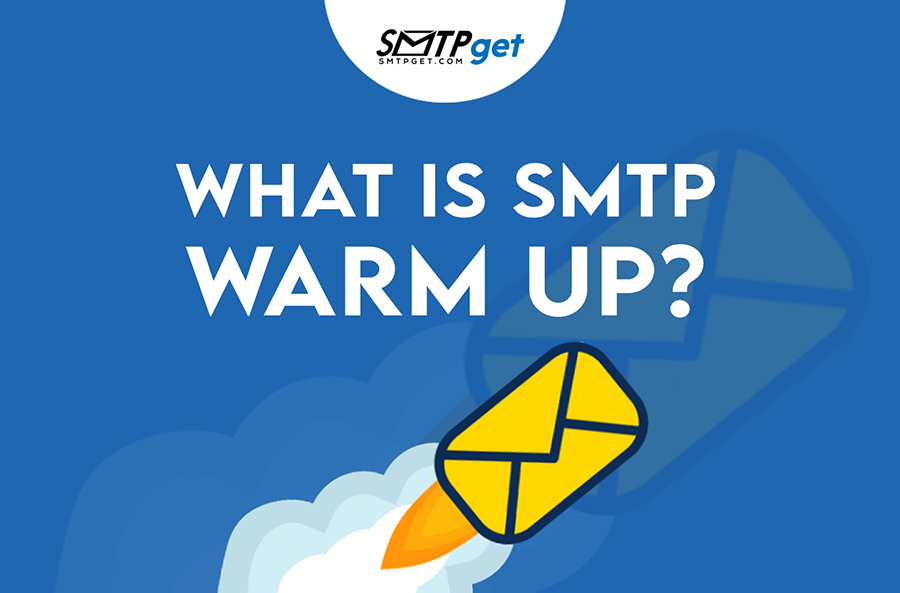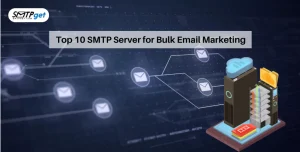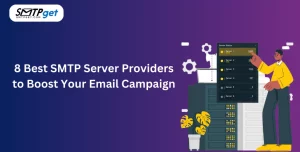When a new dedicated SMTP IP address is added to your email account or software, the warming up of an SMTP Server is necessary and you need to know how to warm up SMTP server Ip. A Company like SMTPGET provides SMTP server warming-up services. You will also need to warm up your IP if you haven’t sent it in more than 30 days. How Warming up IP addresses helps you send more emails over your new IP over time, establishing positive sender credibility and establishing an email sender reputation as a legal email sender with ISPs (Internet Service Providers).
There are two approaches to warming up your IP address. If your SMTP mail server is new or you’ve never had one before, you’ll need to warm it up manually or your Smtp relay service providers will do it on its own. If you’re connecting new SMTP dedicated IPs to current warm IPs, you can use the UI or API to warm them up automatically.
How to Warming up the SMTP IP manually?
To warm up your IP manually, send more and more emails using an SMTP server for sending emails over your IP address at the rate recommended in our IP Warmup Schedule but what to do if. Since the receiver SMTP server dedicated IP does not accept the mail when sent from a new domain and IP address, you are potentially more vulnerable to receiving blocks, deferrals, and other reputation-related email errors. It’s critical to establish this credibility over time, which is why we suggest using IP warmup throttling as soon as you get your new dedicated IP. This is a manual procedure for users with a single IP address. It is recommended that you segment your mailings by breaking down contacts into smaller lists and coordinating your campaigns. IP warmup for Bulk email marketing Service aims to prevent and/or reduce deliverability risks involving blocks, deferrals, and bounces, which are all signs of a poor reputation. Warming up has the aim of increasing your sending volume to the expected “natural” rate.
How Warming up your SMTP IP address automatically
To use automated IP warm-up, you’ll need two or three IP addresses, one of which will be automatically warmed up while the other (already warmed IP) will serve as an overflow for any emails that meet the hourly cap. Twilio SendGrid uses automated IP warmup to throttle the number of emails you send, stopping you from losing your sender credibility.
In the UI, the steps to set up an automatic IP warmup are as follows:
- Go to IP Addresses in the Configuration menu.
- To warm up an IP, go to the action menu for that IP. The Edit Your Dedicated IP Address screen appears.
- Select Use Automated IP Warmup from the drop-down menu.
- Save the screen where you can edit your dedicated IP address.
You can follow the following Process also to warm up your SMTP server
Steps to Be Follow for Warming up an SMTP server
1: Always use fresh content, Avoid spam keywords like Hurry, Offer, etc
2: Use personalized emails to send.
3: Clean your list every time you send bulk emails.
4: Use effective subject lines.
5: If you are using a new IP plz send emails in increasing order as given below.
1 Day: 100 emails
2 Day: 200 emails
3 Day: 400 emails
4 Day: 700 emails
5 Day: 1000 emails
6 Day: 1400 emails
7 Day: 2000 emails
6: Always give your receiver the option of opting out of your emails.
7: You can also test your first email on a mail tester to check your email score.
8: Blacklists in one or two places will not impact email delivery if we follow the above process.
9. All technical settings must be done before sending emails.
API for automated IP warmup
According to our warmup plan, the automated Warmup API can also bring your IP address into warmup mode, which automatically throttles traffic sent through your new IP Any email requests that reach this hourly cap will be forwarded to any of your account’s other warm IPs.
Hourly submit a schedule for automatic IP warmup
Your Mass email server provider restricts the number of emails sent to an IP every hour. It immediately warms it up following well-structured hourly submit a schedule for automatic IP warmup. You can easily get this information from your service provider before starting the warming-up process.
Remember that since you cannot monitor the rate at which transactional emails are triggered across the account, you do not need to rely on a strict IP warmup plan while you are sending transactional emails. If you’re sending marketing emails through a Bulk email server, you’ll need to do some SMTP warmup, which entails steadying the number of emails you send on this new IP day by day. It’s best if you can warm up slowly. You’ll be able to notice and correct any irregularities or problems that occur when you first start sending, which will improve your deliverability in the long run.
Do you know how to find your SMTP server for Gmail?
Why isn’t IP warmup required by other ESPs?
Some Bulk email service provider do not provide dedicated IP addresses to their customers; instead, all their customers are automatically assigned to shared IP groups. A mutual IP community does not need any warming up.








